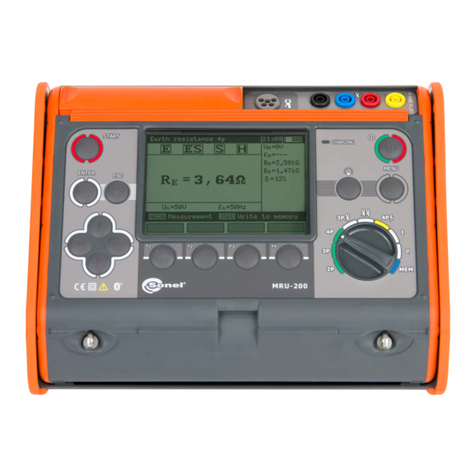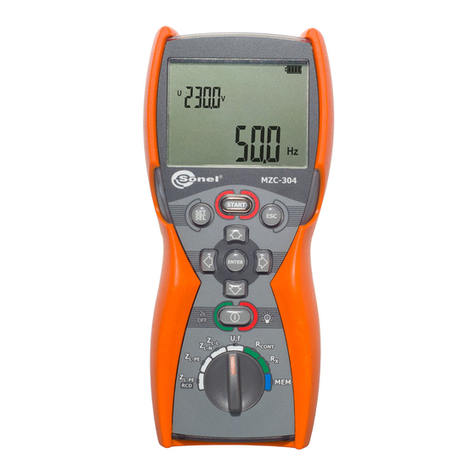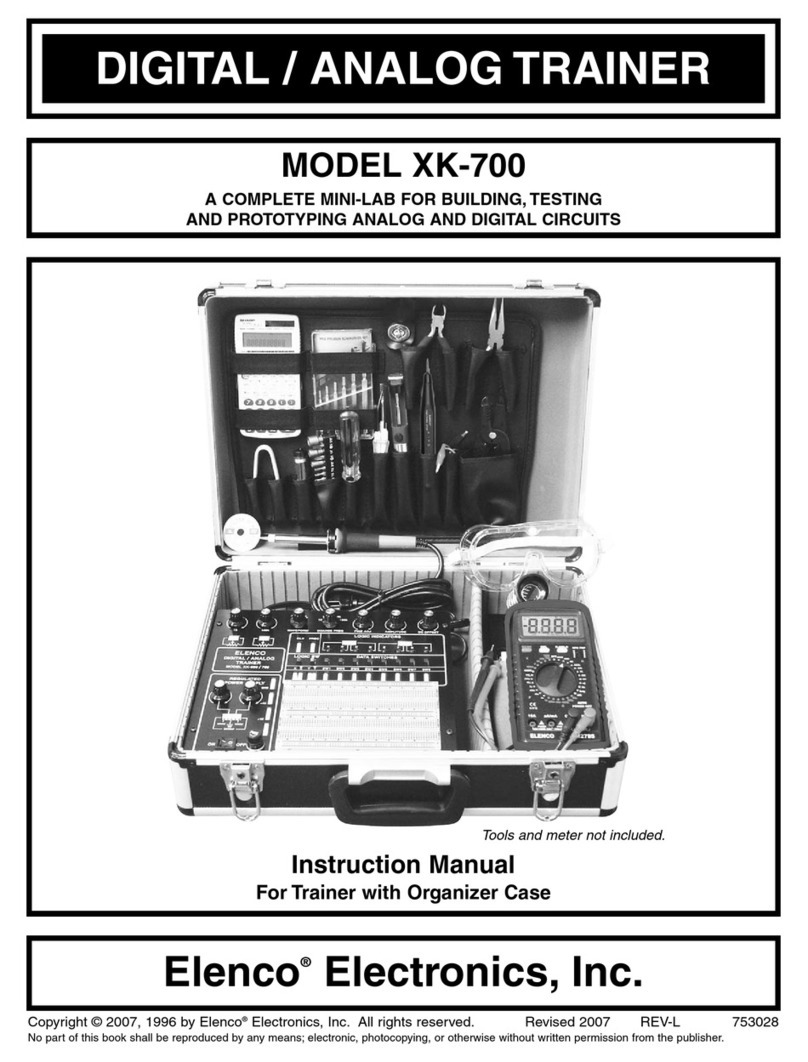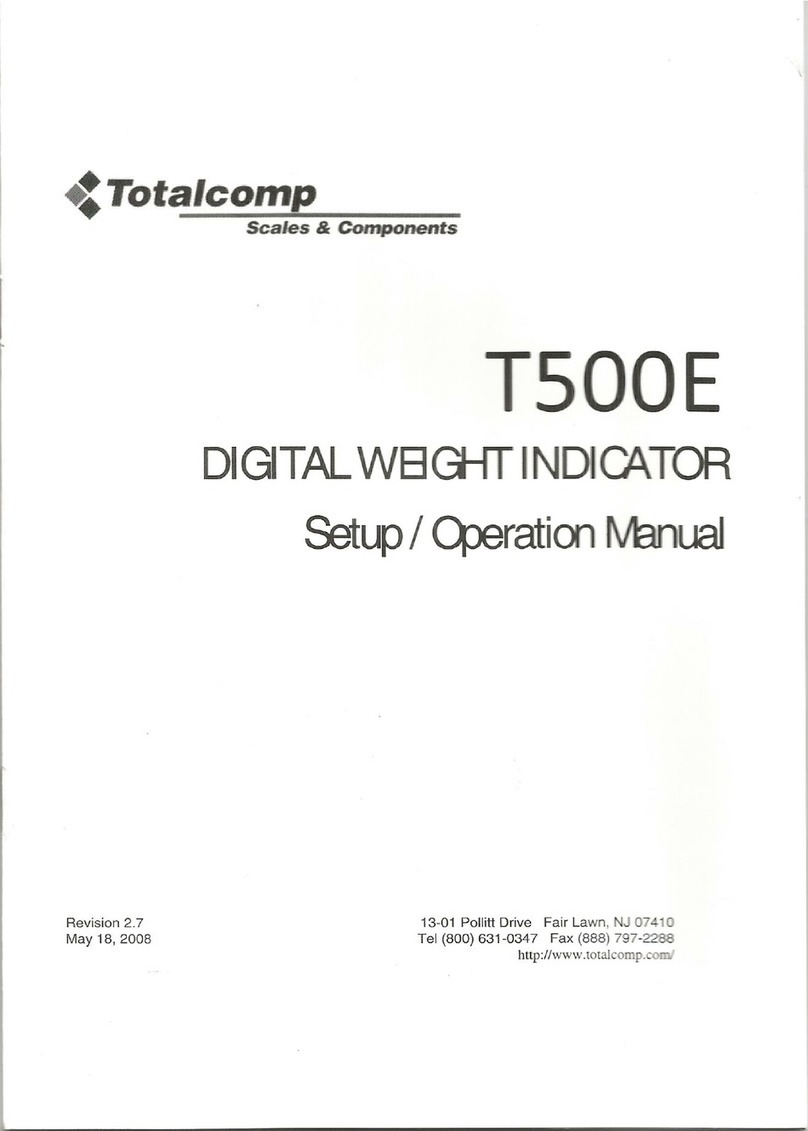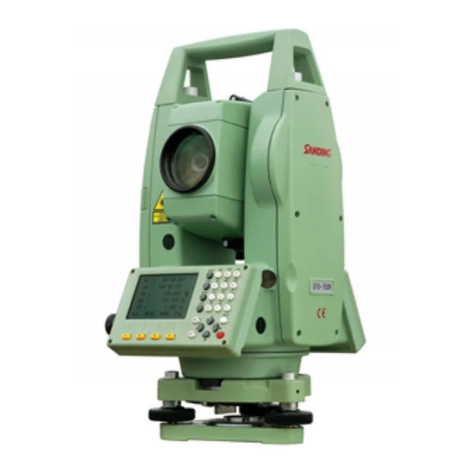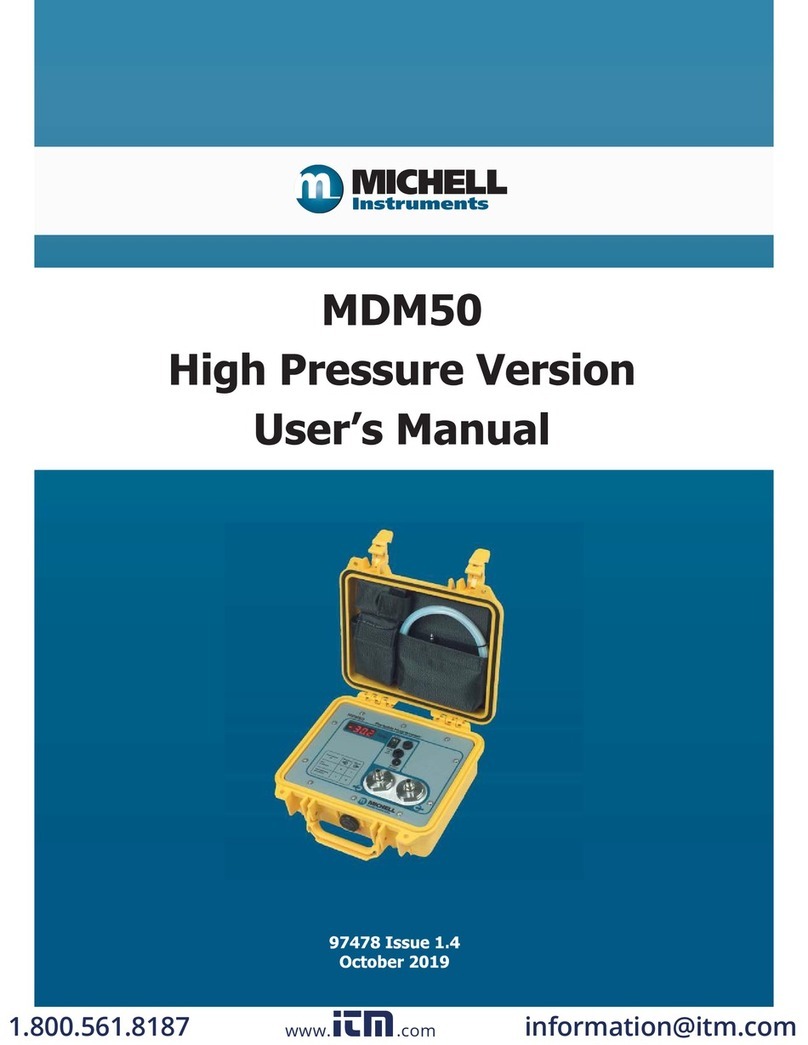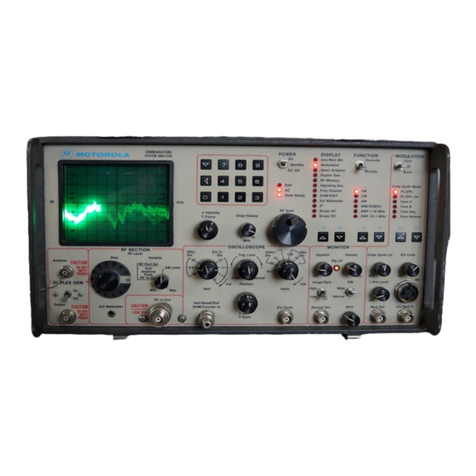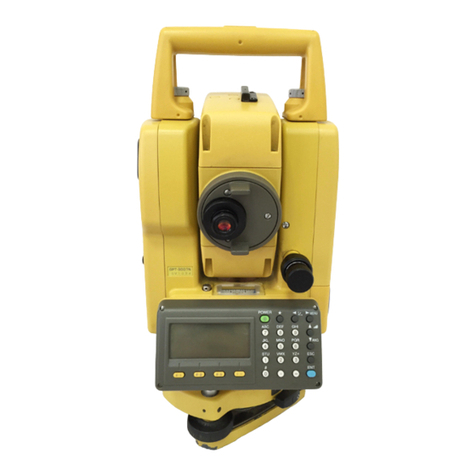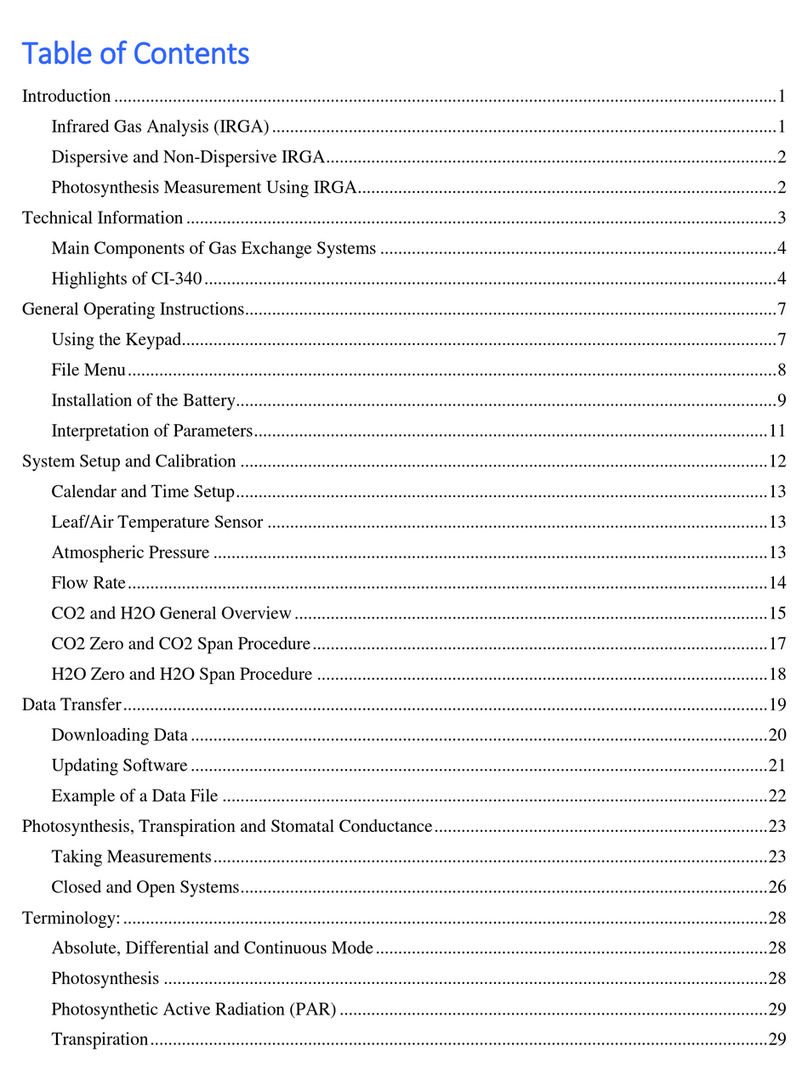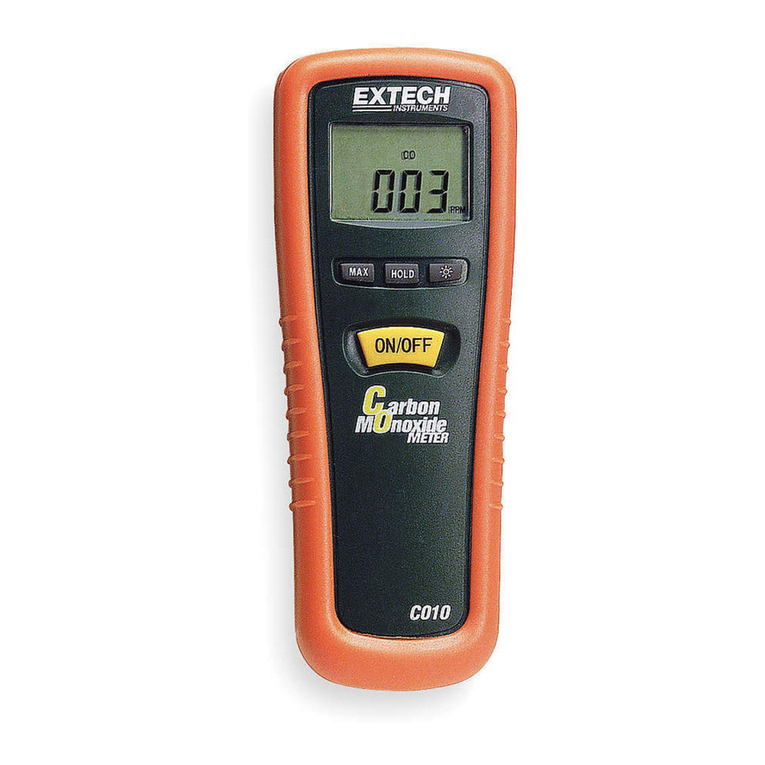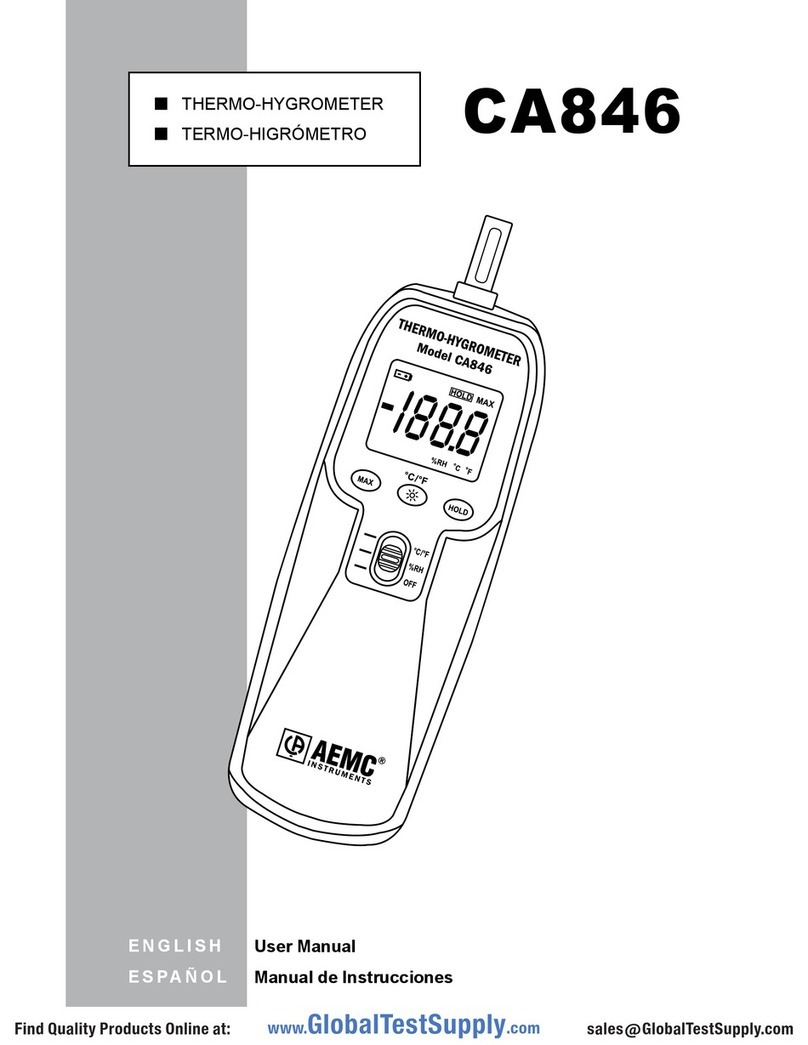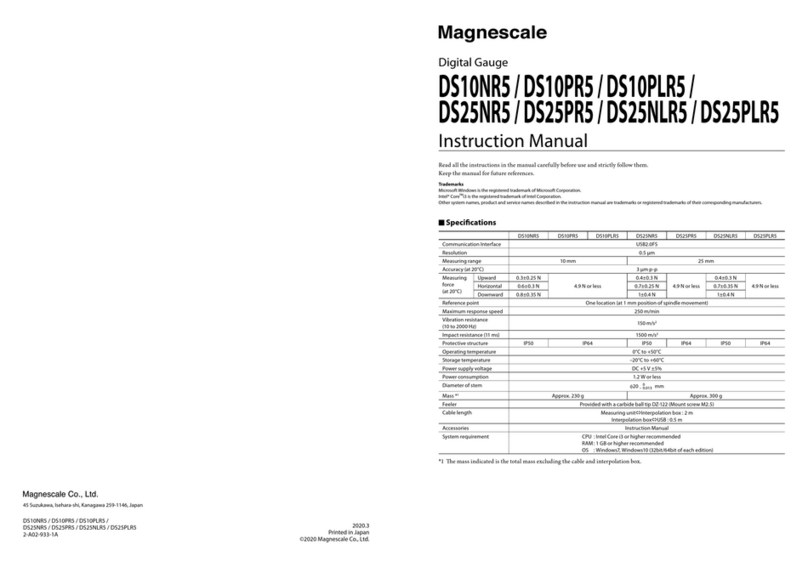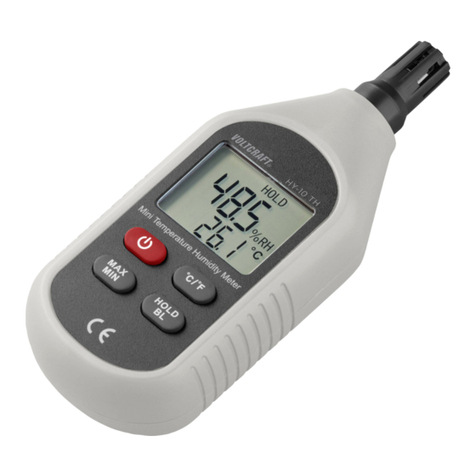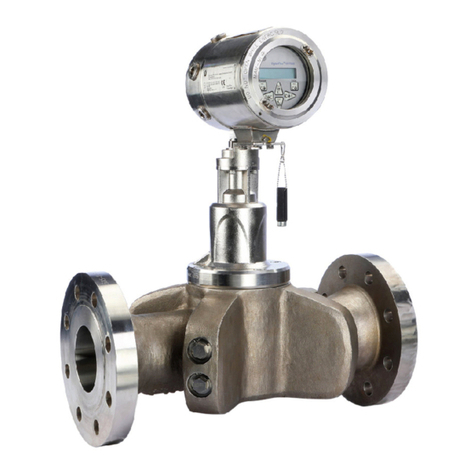Sonel MIC-30 User manual



USER MANUAL
INSULATION RESISTANCE METER
MIC-30
SONEL S.A.
Wokulskiego 11
58-100 Świdnica, Poland
Version 1.10 24.10.2018

MIC-30 –USER MANUAL
2
MIC-30 meter is a modern, easy and safe measuring device. Please acquaint yourself with the present
manual in order to avoid measuring errors and prevent possible problems related to operation of the
meter.

MIC-30 –USER MANUAL
3
CONTENTS
1Safety ................................................................................................................5
2Meter Configuration.........................................................................................6
3Measurements..................................................................................................7
3.1 Measurement of insulation resistance......................................................................7
3.1.1 Double-lead measurement (with a shielded lead)..............................................................7
3.1.2 Three-lead measurement (with a shielded lead)..............................................................11
3.1.3 Measurements with WS-04 adapter ................................................................................11
3.2 Low-voltage measurement of resistance................................................................ 13
3.2.1 Measurement of resistance of protective conductors and equipotential bonding with 200
mA current......................................................................................................................13
3.2.2 Measurement of resistance.............................................................................................15
3.2.3 Compensation of test leads resistance............................................................................16
3.3 Voltage measurement............................................................................................ 17
3.4 Remembering the last measurement result............................................................ 18
4Memory of measurement result data...........................................................18
4.1 Storing the measurement results in the memory.................................................... 19
4.2 Viewing memory data............................................................................................. 21
4.3 Deleting memory data............................................................................................ 22
4.3.1 Deleting bank data..........................................................................................................22
4.3.2 Deleting the whole memory.............................................................................................23
5Wireless data transmission ..........................................................................24
5.1 Computer connection accessories......................................................................... 24
5.2 Data transmission with Bluetooth 4.2 module ........................................................ 25
5.3 Data transmission with OR-1 radio module............................................................ 26
6Firmware updates ..........................................................................................27
7Power supply of the meter............................................................................28
7.1 Monitoring of the power supply voltage.................................................................. 28
7.2 Replacing battery/rechargeable batteries............................................................... 28
7.3 General principles regarding using NiMH rechargeable batteries.......................... 29
8Cleaning and maintenance ...........................................................................29
9Storage............................................................................................................30
10 Dismantling and Disposal.............................................................................30
11 Technical specifications ...............................................................................30
11.1 Basic data .............................................................................................................. 30
11.2 Additional data ....................................................................................................... 33
11.2.1 Additional uncertainties according to IEC 61557-2 (RISO).................................................33
11.2.2 Additional uncertainties according to IEC 61557-4 (RCONT 200mA)..................................33
12 Equipment ......................................................................................................33
12.1 Standard equipment............................................................................................... 33
12.2 Optional accessories.............................................................................................. 34
13 Manufacturer ..................................................................................................35
14 Laboratory services.......................................................................................36

MIC-30 –USER MANUAL
4

MIC-30 –USER MANUAL
5
1 Safety
MIC-30 meter is designed for performing check tests of protection against electric shock in mains
systems. The meter is used for making measurements and providing results to determine safety of
electrical installations. Therefore, in order to provide conditions for correct operation and thecorrectness
of the obtained results, the following recommendations must be observed:
Before you proceed to operate the meter, acquaint yourself thoroughly with the present manual and
observe the safety regulations and specifications determined by the producer.
Any application that differs from those specified in the present manual may result in a damage to
the device and constitute a source of danger for the user.
MIC-30 meters must be operated only by appropriately qualified personnel with relevant certificates
authorising the personnel to perform works on electric systems. Operating the meter by
unauthorised personnel may result in damage to the device and constitute a source of danger for
the user.
During measurements of insulation resistance, dangerous voltage up to 1 kV occurs at the ends of
test leads of the meter.
Before the measurement of insulation resistance you must be sure that tested object is
disconnected from the power supply
During the measurement of insulation resistance do not disconnect test leads from the tested object
before the measurement is completed (see par. 3.1.1); otherwise the capacitance of the object will
not be discharged, creating the risk of electric shock,
Using this manual does not exclude the need to comply with occupational health and safety
regulations and with other relevant fire regulations required during the performance of a particular
type of work. Before starting the work with the device in special environments, e.g. potentially fire-
risk/explosive environment, it is necessary to consult it with the person responsible for health and
safety.
It is unacceptable to operate the following:
A damaged meter which is completely or partially out of order,
A meter with damaged test leads insulation,
A meter stored for an excessive period of time in disadvantageous conditions (e.g. excessive
humidity). If the meter has been transferred from a cool to a warm environment with a high level
of relative humidity, do not start measurements until the meter is warmed up to the ambient
temperature (approximately 30 minutes).
Displayed BATT symbol indicates insufficient voltage of power supply and the need to charge the
accumulator or replace batteries.
Symbols ErrX, where Xis a number 1…9, indicate incorrect operation of the meter. If after restarting
the device this situation is repeated - it indicates that the meter is damaged.
Before measurement, choose a correct measurement function and make sure that test leads are
connected to respective measuring terminals.
Do not operate a meter with an open or incorrectly closed battery (accumulator) compartment or
power it from other sources than those specified in the present manual.
Meter inputs are electronically protected against overloads (caused by e.g. connecting the meter to
a live circuit) up to 550V, for voltmeter up to 600V.
Repairs may be carried out only by an authorised service point.
Note:
An attempt to install drivers in 64-bit Windows 8 and Windows 10 may result in displaying
"Installation failed" message.
Cause: Windows 8 and Windows 10 by default blocks drivers without a digital signature.
Solution: Disable the driver signature enforcement in Windows.
Note:
Due to continuous development of the meter’s software, the actual appearance of the display,
in case of some of the functions,mayslightlydiffer from the displaypresented in this operating
manual.

MIC-30 –USER MANUAL
6
2 Meter Configuration
Turn on the meter by pressing and
keeping SET/SEL button pressed.
Use and buttons to go to the next
parameter.
Use and buttons to change the
parameter value. The value or symbol to be
changed is flashing.
The symbol indicates an active parameter,
the - symbol indicates an inactive one.
Set the parameters according to the following algorithm:
Parameter
Auto-
OFF
Change PIN
Absorption
coefficients
Pairs of
WS-04
adapter
Beep
signalling
pressed
push-button
Selection
of
power
supply
source
Software
update
Symbol(s)
,
or
Press ENTER to validate the last change and go to
the measurement function,
or
Press ESC to go the measurement function
without validating the changes.
Notes:
- Each change DAR PI <-> Ab1Ab2 will set standard times t1, t2 and t3:
- for PI and DAR t1=30s, t2=60s, t3=none,
- for Ab1 and Ab2 t1=15s, t2=60s, t3=none.
-Description of a firmware update is presented in the chapter 6.

MIC-30 –USER MANUAL
7
3 Measurements
3.1 Measurement of insulation resistance
WARNING:
Measured object must not be live.
Note:
During measurement, especially of high resistances, make sure that test leads
do not touch each other and the probe (crocodile clips), because such a contact
may cause the flow of surface currents resulting in additional error in
measurement results.
3.1.1 Double-lead measurement (with a shielded lead)
Set the rotary switch of function
selection at one of RISO
positions, selecting
simultaneously measuring
voltage (for position 50...1000V -
selected with 10V step). The
meter is in the voltage
measurement mode.
Press SET/SEL push-button to select time used
for calculating the absorption coefficients - t1, t2,
t3.
For the position of the selector 50...1000V, an
additional option is available to select the
measuring voltage UN.
Use and the meter enters into the
setting of UN, t1, t2, t3.
Use and buttons to change the
parameter value.
Press ENTER to confirm settings (confirmed by
beep) or press ESC to leave without saving the
changes.
Connect test leads according to the drawing.

MIC-30 –USER MANUAL
8
The end of the shielded cable with two banana plugs may be connected only to
the meter. Do not connect it to the tested object or to the network.
The meter is ready
for measurement.
Press and hold START push-button.
The measurement is performed continuously
until you release the button or the pre-set time
is reached.
In order to maintain (lock) the measurement
order to maintain the measurement, press
ENTER while holding START - push-button
pressed - the following symbol will be
displayed . In order to interrupt the
measurement, press ESC or START.

MIC-30 –USER MANUAL
9
View of the screen
during
measurement.
Using SET/SEL you may display the
leakage current IL instead of UISO.
After measuring is
completed, read the
result.
Use and to see individual components of
the result in the following order:
(RISO + UISO)→(C + IL)→(Rt1 + It1)→(Rt2 + It2)→
(Rt3 + It3)→(Ab1(DAR) + UISO)→(Ab2(PI) + UISO)→
(RISO + UISO), where C –is the capacitance of the
tested object.
Notes:
During measurements of insulation resistance, dangerous voltage up to 1 kV
occurs at the ends of test leads of MIC-30 meter.
It is forbidden to disconnect test leads before the measurement is completed.
Failure to obey the above instruction will lead to high voltage electric shock and
make it impossible to discharge the object tested.
- Disabling t2 will also disable t3.

MIC-30 –USER MANUAL
10
- Timer measuring the measurement time is started when UISO voltage is stabilized.
- Symbol LIMIT I! indicates working with current limiting (e.g. when charging an object).
- If the work with limited current lasts for 20 seconds, the measurement is interrupted.
- When the timer passes specific points (tx times) a long beep is emitted.
- If any of the measured values of partial resistance is out of range, the value of the absorption coefficient
is not displayed –the display shows dashes.
- During the measurement LED is lit in orange.
- After completion of measurement, the capacitance of the object tested is discharged by shorting test
terminals with the resistance of 100k.
- Capacitance of the object is measured at the end of the measurement during the object discharge.
- If during the measurement, an external voltage is present, after 20 seconds the measurement is
stopped, is displayed and two-tone beep is emitted, LED will lit in red.
Additional information displayed by the meter
Test voltage is present on terminals of the meter.
You must consult the manual.
The meter is ready for measurement.
This inscription displayed after the measurement indicates
noise in the system during the measurement. The
measurement result may be affected by additional
uncertainty.
Activation of current limit. The symbol displayed is
accompanied by a continuous audio signal.
Leakage current too high (breakdown of insulation during
the measurement.)
Discharging of the object tested after the measurement.
LED is lit
in red, two-tone
acoustic signal
The tested object is live. The measurement is blocked.
Discharged batteries (rechargeable batteries).

MIC-30 –USER MANUAL
11
3.1.2 Three-lead measurement (with a shielded lead)
In order to eliminate the influence of surface currents in the devices of up to 1kV, a three-lead
measurement is used. For example, to measure the inter-winding resistance of a small motor, connect
G socket of the meter with the motor housing:
3.1.3 Measurements with WS-04 adapter
NOTE
Measurements with WS-04 are possible at the measurement voltage of 500V, for
higher voltages the measurement is blocked.
WS-04 provides automatic measurement of up to 3 combinations of test leads from N, L and PE.
The adapter is ended at one side with a plug to be connected to the input terminals of the meter, while
at the other side with a standard outlet plug with a grounding plug. Combinations of leads that are to be
automatically tested, are defined in the meter settings, see Chapter 2.
Set the rotary switch of function
selection at one of RISO positions,
selecting simultaneously measuring
voltage (position 50...1000V -
selected with 10V step). The meter
is in the voltage measurement
mode.

MIC-30 –USER MANUAL
12
After inserting WS-04
into the socket, the
screen displays a
message indicating
the detection of the
adapter.
Set the measuring voltage UN(applies only for 50...1000V
position of the switch), and times t1, t2, t3 as in double-lead
measurement. These settings relate to the measurement of
insulation resistance for each pair of leads selected in the main
settings.
Connect WS-04 plug to the socket tested.
Start the measurement as in case of double-lead measurement.
The meter measures
the insulation
resistance for selected
pairs of leads in the
following order: L-N, L-
PE, N-PE.
After measuring is
completed, read the
result.
Use and to view the individual components
of the measurement as in double-lead measurement
and for pairs L-N, L-PE, N-PE.

MIC-30 –USER MANUAL
13
Note:
- In cases of errors , LIMIT I! the measurement is interrupted onlyfor the current pair of leads and
not for the entire measurement.
- In case of error the entire measurement is interrupted.
- Other comments and displayed symbols as for the double-lead measurement.
3.2 Low-voltage measurement of resistance
3.2.1 Measurement of resistance of protective conductors and equipotential
bonding with 200 mA current
NOTE
MIC-30 meter measures RCONT bidirectionally (±200mA).
Set the rotary switch of function
selection at RCONT position.
The meter is ready for
measurement.
Connect the meter to the object tested.
The measurement starts automatically when the meter detects a
resistance within the measurement range.
The measurement may be also triggered manually by pressing
START push-button.

MIC-30 –USER MANUAL
14
Read the result.
Press START push-button in order to start a next
measurement without disconnecting test leads from
the object.
Additional information displayed by the meter
This inscription displayed after the measurement
indicates noise in the system during the measurement
The measurement result may be affected by additional
uncertainty.
LED is lit
in red, two-tone
acoustic signal
The tested object is live. The measurement is blocked.
Resistance compensation completed for test leads
The compensation resistance is taken into
consideration when displaying result.

MIC-30 –USER MANUAL
15
3.2.2 Measurement of resistance
Set the rotary switch of function
selection at RXposition.
The meter is ready for
measurement.
Connect the meter to the object tested. The measurement is
continuous.

MIC-30 –USER MANUAL
16
Read out the result.
Note:
- For R <30Ω there is a continuous beep and LED lights green.
3.2.3 Compensation of test leads resistance
In order to eliminate the impact of the resistance of test leads on measurement result (RCONT and
RX), the compensation (auto-zeroing) of resistance may be performed.
Set the rotary switch of function
selection at RZERO position.
Short the test leads.
Press START.

MIC-30 –USER MANUAL
17
and
are displayed,
confirming the
completion of test
leads resistance
compensation.
The compensation is
available for RCONT
and RXand is active
even after the meter
is switched off and
on again.
In order to remove the compensation made (and return to default
calibration), perform the above-mentioned activities with test leads
open –messages and disappear, the following
message is displayed .
3.3 Voltage measurement
Set the rotary switch of
function selection at U
position.
Connect the meter to a
voltage source.

MIC-30 –USER MANUAL
18
Measurement is
performed in a
continuous manner.
Additional information displayed by the meter
LED is lit in red,
two-tone acoustic
signal
Voltage is higher than acceptable.
Immediately disconnect the test leads.
3.4 Remembering the last measurement result
Result of the latest measurement is remembered by the meter until a next measurement is started
or measurement settings are changed or the measuring function is changed by means of the rotary
switch. When you go to the initial screen of a given function (e.g. by using ESC button), you can recall
this result automatically after pressing ENTER. Similarly, you can view the latest measurement result
after turning off and then turning on themeter (if the position of function selector has not been changed).
4 Memory of measurement result data
MIC-30 Meters are equipped with a memory for storing test results (990 cells, each of which may
contain a set of measurements of RISO and RCONT). The whole memory is divided into 10 memory banks
with 99 cells in each bank. Thanks to dynamic memory allocation, each of the memory cells can contain
different quantity of single measurement results, depending on the needs. Optimal use of the memory
can be ensured in this way. Each measurement result can be stored in a memory cell marked with a
selected number and in a selected memory bank. Thanks to this, the user of the meter can, at his/her
option, assign memory cell numbers to individual measurement points and the memory bank numbers
to individual facilities. The user can also perform measurements in any sequence and repeat them
without losing other data.
Memory of measurement result data is preserved when the meter is switched off. Thanks to this,
the data can be later read or sent to a computer. The number of a current memory cell or memory bank
is not changed either.
Notes:
- Results of measurements performed for all measuring functions can be stored in one memory cell,
excluding RX and U .
- After entering the measurement result, the number of the cell is automatically incremented.
- It is recommended to delete the memory after reading the data or before performing a new series of
measurements that may be stored into the same memory cells as the previous ones.
Other manuals for MIC-30
1
Table of contents
Other Sonel Measuring Instrument manuals
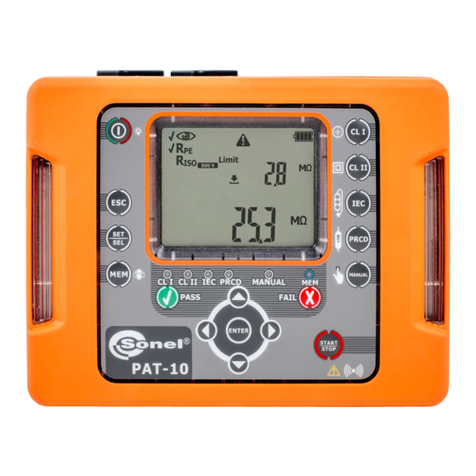
Sonel
Sonel PAT-1 User manual
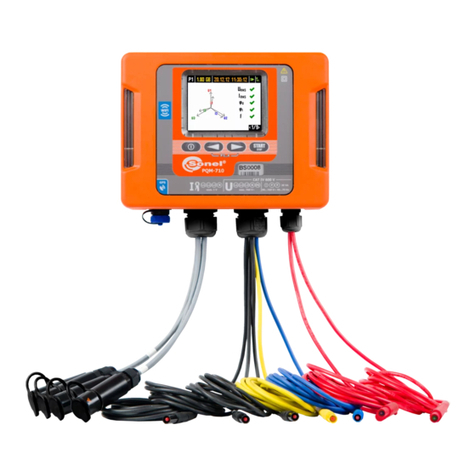
Sonel
Sonel PQM-702 User manual

Sonel
Sonel PQM-702 User manual

Sonel
Sonel PQM-700 User manual

Sonel
Sonel MIC-10k1 User manual
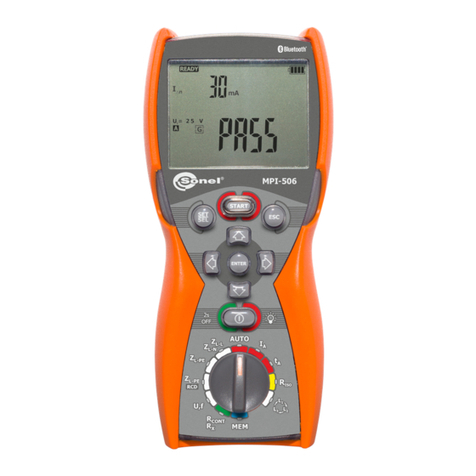
Sonel
Sonel MPI-506 User manual

Sonel
Sonel CMP-400 User manual
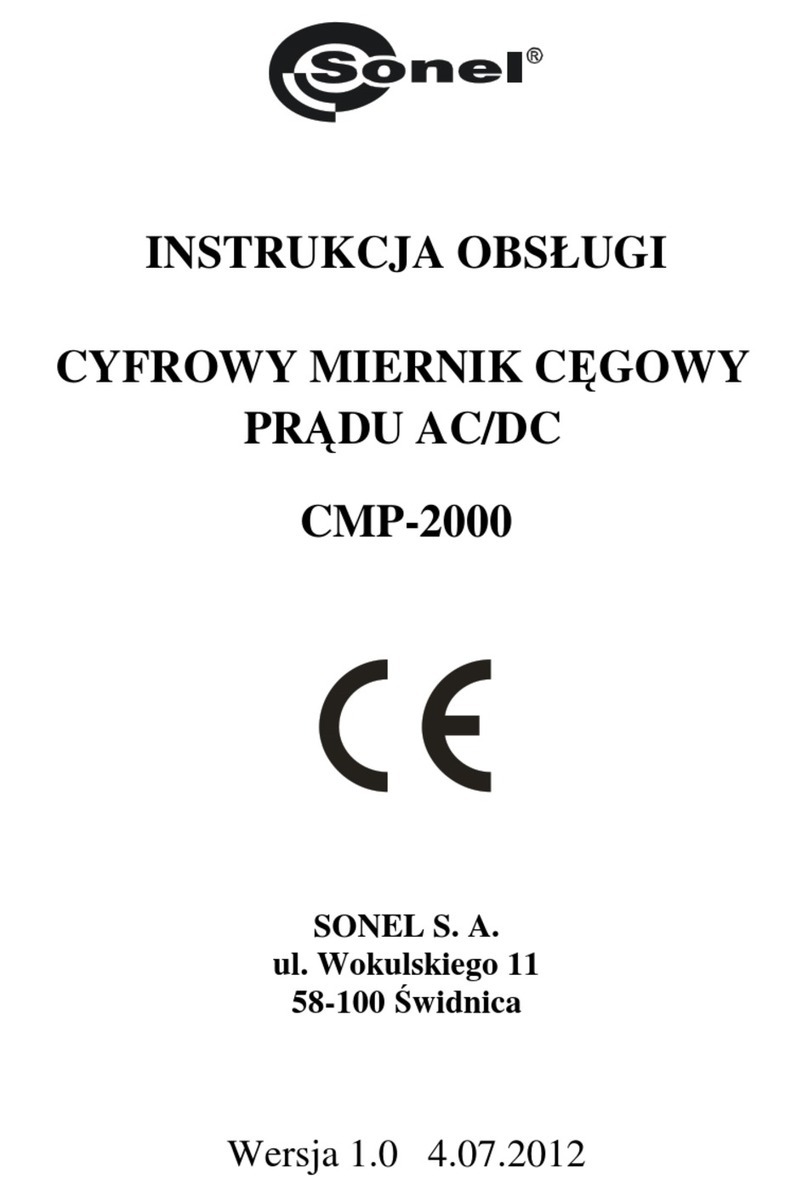
Sonel
Sonel CMP-2000 User manual
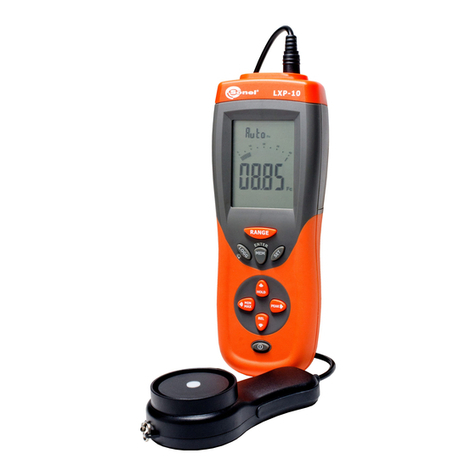
Sonel
Sonel LXP-10B User manual
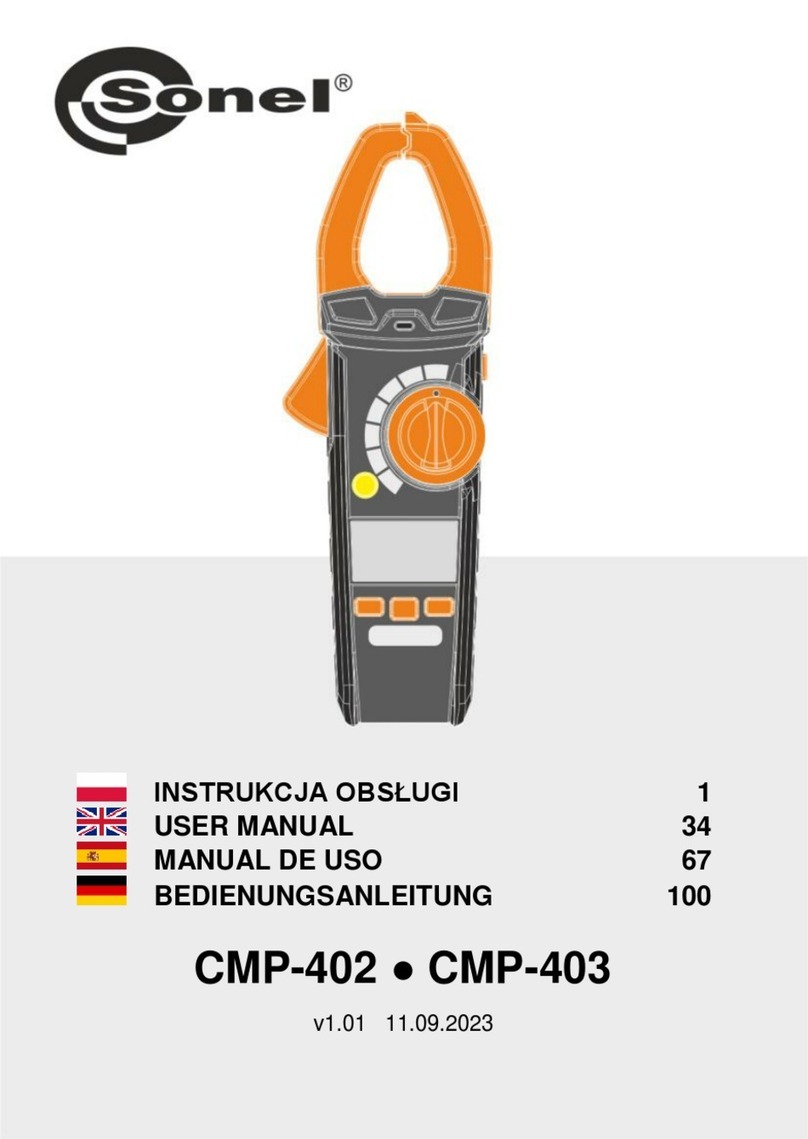
Sonel
Sonel CMP-402 User manual
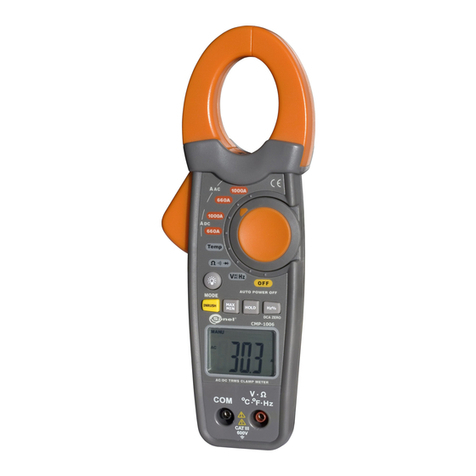
Sonel
Sonel CMP-1006 User manual
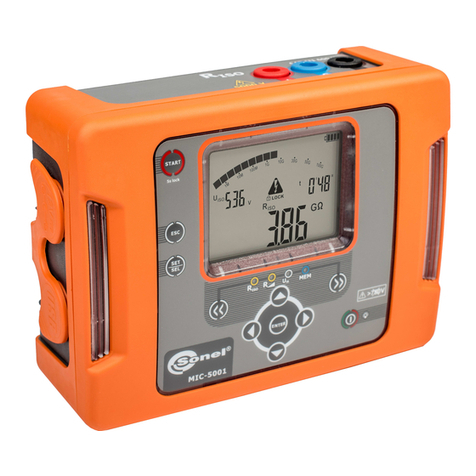
Sonel
Sonel MIC-5001 User manual
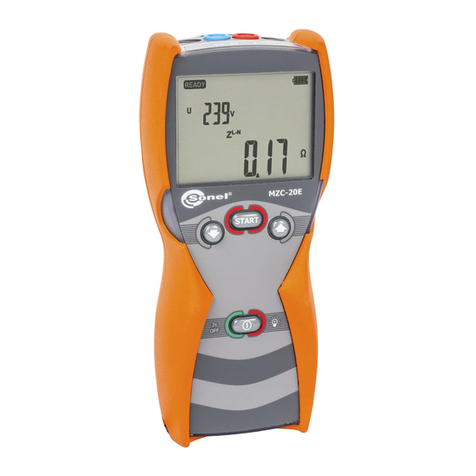
Sonel
Sonel MZC-20E User manual
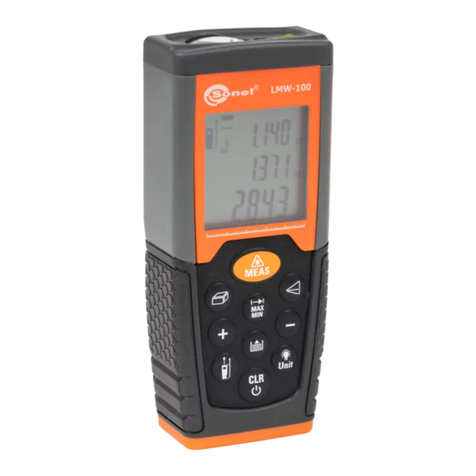
Sonel
Sonel LMW-100 User manual

Sonel
Sonel TDR-410 User manual

Sonel
Sonel CMP-1015-PV User manual
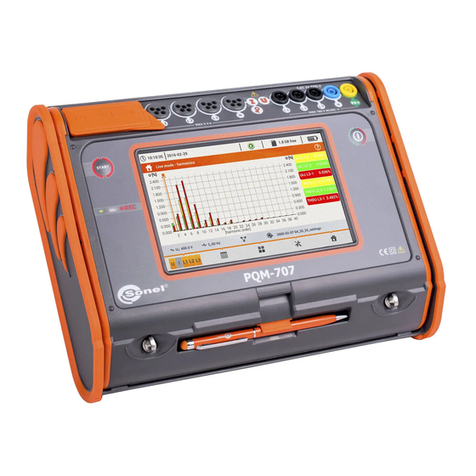
Sonel
Sonel PQM-707 User manual

Sonel
Sonel MRU-120HD User manual
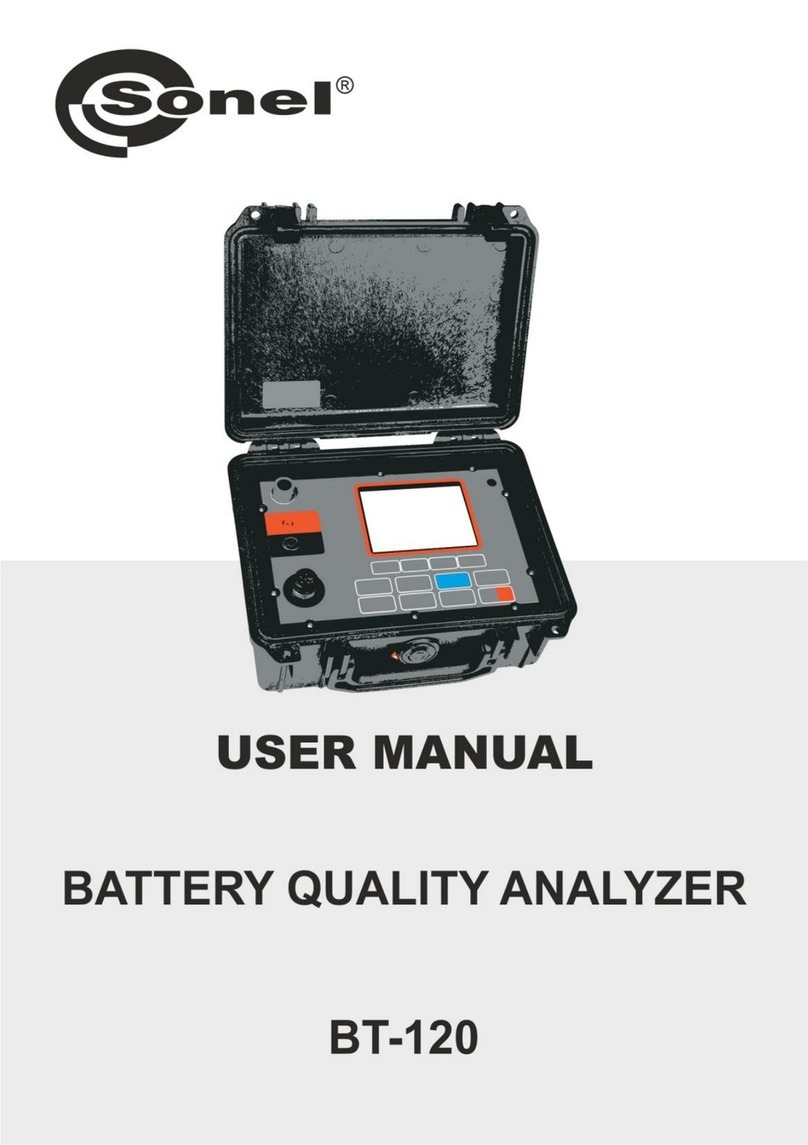
Sonel
Sonel BT-120 User manual

Sonel
Sonel PQM-701 User manual
